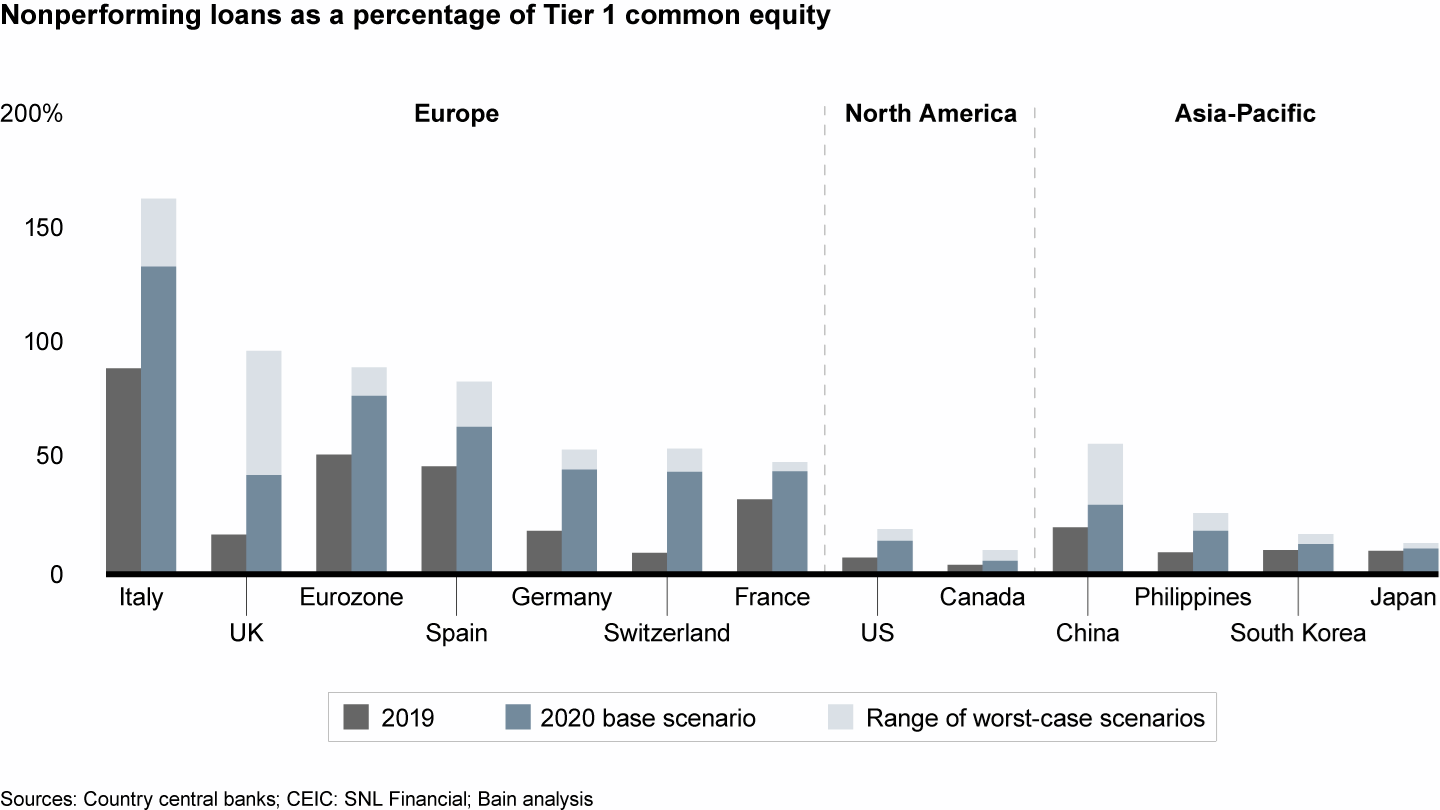Brief

Apart from the human health consequences of Covid-19, the subsequent lockdowns of physical locations have caused severe disruptions to virtually all industries and most companies. Lower demand for many products have reduced revenues and cash collection, while supply chain gaps have led to a scarcity of many components and finished goods.
This contraction in business and consumer spending will put national economies into recession. Small businesses and corporate customers will be pummeled, probably leading to a spike in loan defaults across most industries.
That, in turn, could impair banks’ capitalization and liquidity. A new wave of nonperforming loans could potentially stress banking systems (see Figure 1).
A wave of nonperforming loans could stress banking systems in many countries


Many vulnerable small and medium-sized enterprise (SME) and corporate clients will ask their bank for more credit, all at the same time. They also will be looking for advice on how to take advantage of state aid. This wave of requests will put a premium on speed and zero-defect processes. Yet banking organizations may be constrained in handling the requests, given the extensive work-from-home operations currently underway.
Banks that hope to succeed in SME and corporate markets should act now on several dimensions:
- Adapt the value proposition and organizational capabilities to respond to customers’ urgent priorities.
- Accelerate development of digital tools that support new ways of working at home.
- Accelerate the omnichannel business model, which has become essential rather than optional.
- Assess the credit portfolio to understand how the pandemic has affected each client.
- Prioritize support of clients to optimize the bank’s risk profile and the value generated for the bank and the client.
- Ensure credit and liquidity for high-value clients. For instance, help them use state aid effectively, suspend principal payment, and renegotiate lines of credit to align with new expected cash flows.
- Invest more in communication to improve one’s position in the market.
Leading banks have already begun to evolve their go-to-market activities. Some have intensified collaboration between commercial and credit functions, in order to speed approval processes for high-priority clients. Others have taken a more industrial approach to small-ticket requests, by simplifying and automating processes.
A number of banks have gone beyond government prescriptions to support their business customers. For example, some introduced payment deferrals with more favorable conditions for customers. Many put in place automatic renewal of short-term financing and cash conversion of receivables financing, in order to ensure additional liquidity.
In addition, a few banks have offered nonfinancial support, including long-term rental solutions for laptops, tablets and other tools for digital distribution and payments.
The common thread among these leaders: a shift from a credit-centered to a customer-priority-centered mindset and approach.

Coronavirus
The global Covid-19 pandemic has extracted a terrible human toll and spurred sweeping changes in the world economy. Across industries, executives have begun reassessing their strategies and repositioning their companies to thrive now and in the world beyond coronavirus.